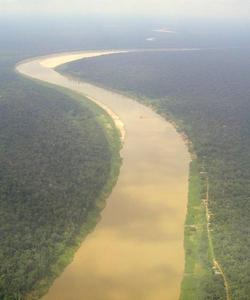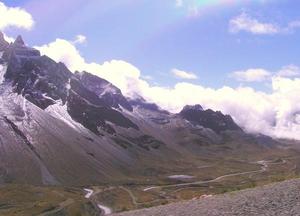Project beneficiaries
Institut de recherche pour le développement
France
Fundação Universidade de Brasília
Brazil
Stichting Koninklijk Nederlands Instituut Voor Zeeonderzoek
The Netherlands
Jacobs University Bremen Ggmbh
Germany
Imperial College London
United Kingdom
Helmholtz-Zentrum Potsdam, Deutsches GeoForschungsZentrum
Germany
Universiteit van Amsterdam
The Netherlands
Università degli Studi di Napoli Federico II
Italy
Introduction
The relationship between climate, hydrology, erosion, sedimentary transport and deposition is one of the most important issues in earth sciences and may give important hints on how our planet works. Initially, it results in the formation of a drainage system, and later, in a sedimentary basin that encompasses complex and diverse ecosystems. One of the main scientific challenges nowadays includes the understanding of the dynamic processes involved in large drainage systems and the determination of the sedimentary sources, transport and accumulation of large basins.
While monitoring the water discharge, water quality, sedimentary load, and role of the floodplain by the ORE-HYBAM (Observatoire de Recherches en Environnement sur l’Hydrologie du Bassin AMazonien), we have improved significantly our understanding on the hydrogeochemistry of the Amazon River Basin (Barroux et al., 2006; Guyot et al., 2007; Bonnet et al., 2008; Viers et al., 2008; Roux et al., 2010). But not much is known about the past climatic history of the region, from the Andes to the Ocean (Cordeiro et al., 2011). This could be unraveled from a detailed study of the sedimentary record of the Amazon River Basin that has been so far little studied using modern geochemical approaches. This is CLIM-AMAZON scientific purpose.
CLIM-AMAZON in the XV Brazilian Congress of Geochemistry - Brasilia 2015- 2015 Annual Meeting/ 4th Workshop and Clim-Amazon results presentation in the 6th Ore-Hybam Conference - Cusco 2015
For the CLIM-AMAZON project fencing, the 4th CLIM-AMAZON Workshop and the International Symposium on Climate and Geodynamics of Amazon Basin (2015 CLIM-AMAZON Annual Meeting) will take place in Brasilia on the 21st and 22nd of October 2015, respectively, during the XV Brazilian Geochemistry Congress (19th-22th October 2015).
The CLIM-AMAZON results will be presented also in Cusco during the 6th Ore-Hybam Conference (26th-30th October 2015).
For more information about the XV Brazilian Geochemistry Congress, click here:
http://www.sbgq.org.br/15cbgq/
For more information about the 6th Ore-Hybam conference, click here
6th HYBAM Scientific Meeting - Cusco 2015 (1.29 Mo)



